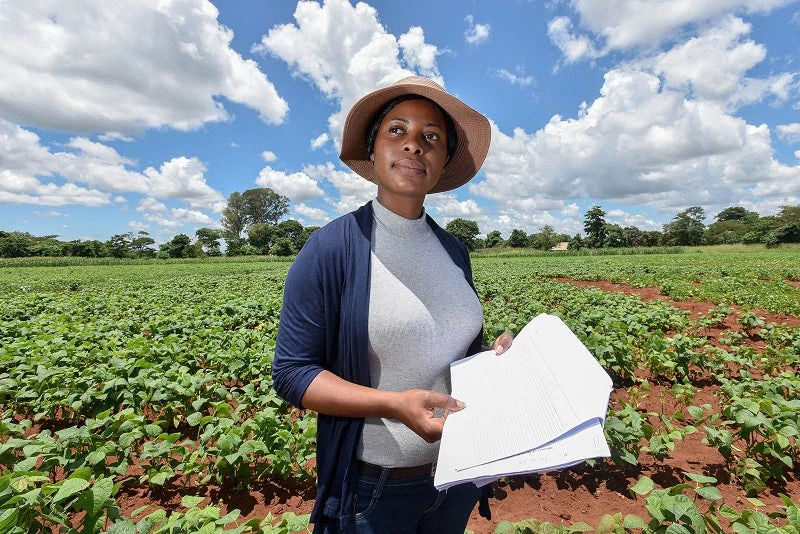
At the recent Africa Agriculture Extension week in Durban, there was a common refrain: "Demand for food in Africa is growing and expected to double by 2050." This is why we see continued growth and employment opportunities in the agricultural value chain and why agriculture extension—or training-- is more important than ever.
So what exactly is agriculture extension? Agricultural extension focuses on delivering advisory services for technologies that help crop, livestock, and fishery farmers, among others. Extension workers are trainers, advisors, project managers, community developers and policy advocators. They also conduct administrative support for local governments and help farmers make decisions and share knowledge. Agriculture extension, which services smallholder farmers throughout the value chain, is crucial in achieving food, nutrition and income security.
Even though agriculture extension is key to building the food systems of the future, it is not always fit for purpose. In Africa, for example, many government extension systems are bureaucratic, unaccountable and poorly resourced.
At the same time, demand for extension services in Africa is growing. The clientele has grown beyond smallholders and young farmers to also include agribusiness enterprises.
Clearly, agricultural extension needs to change with the times. Organizations like the African Forum for Agricultural Advisory Services (AFAAS), which provides forums for experts and extensionists to share ideas, lessons and innovations, are an important resource for professionals in this field.
The youth, who rely primarily on ICT to access information, form a significant component of the farmer population. Therefore, there is a need to re-invest in the government extension system, enhance partnerships, and broaden areas of expertise for extensionists to include social sciences, ICT, environment, and gender. Attention should also be paid to embracing ICTs in extension, improving human resource management and capacity development, targeting women, youth and the private sector. Establishing networks and getting organized to bring stakeholders together is also crucial.
In the past, extension focused on pulling up people who are down. But things have changed. Africa now has a different set of farmers who are more knowledgeable and linked with networks. As such, extension has to pull up its socks and redefine who a farmer is and what services to offer. This transformation has to be market driven. I agree with Dr. Jeff Mutimba of the SAFE Regional Program who argued that “extension should shift from focusing only on production but also be innovative and market driven. There is need for inclusiveness of all gender groups especially the youth, women & people with disabilities because they can be left out in developing markets that requires high standards”. For that reason, extension systems need to change and train the farmers of today and tomorrow on trending topics.
We all know Africa needs a big dose of digital revolution. Farmers are shifting to the use of ICTs to access advisory services such as mobile phones, radio, video, internet. In Africa, most of the youths are registered to use social media platforms. This is a big opportunity: Let us employ youths in the agriculture extension field to work with fellow youths, because they may have trending ideas. Let’s increase youth participation by using the platforms that they are mostly found in, social media channels such a Twitter, Facebook, and WhatsApp.
The revolution will start with giving youth a voice. There is a pressing need to have youth representatives in all extension decision making platforms, including the AFAAS and GFRAS boards so that youth issues are taken onboard. Let’s avoid sitting on a round table making decisions on behalf of the youth. They have a voice, therefore we should include them at decision making tables.
And let’s not forget women, who provide labor and grow crops in Africa that are important to food security. For example in the Northern region of Malawi 80% of women produce legumes, onions, maize and tobacco. In this same region, 20% of men come in at the end, to sell the produce and participate other income generating activities. Therefore, involving the women in agricultural extension is key, and could be a catalyst for agricultural transformation.
It’s clear that agricultural extension needs to transform to meet the needs of the present, and the future. Enabling the participation of young people and women will go a long way towards building an extension system that can feed the future.


Join the Conversation